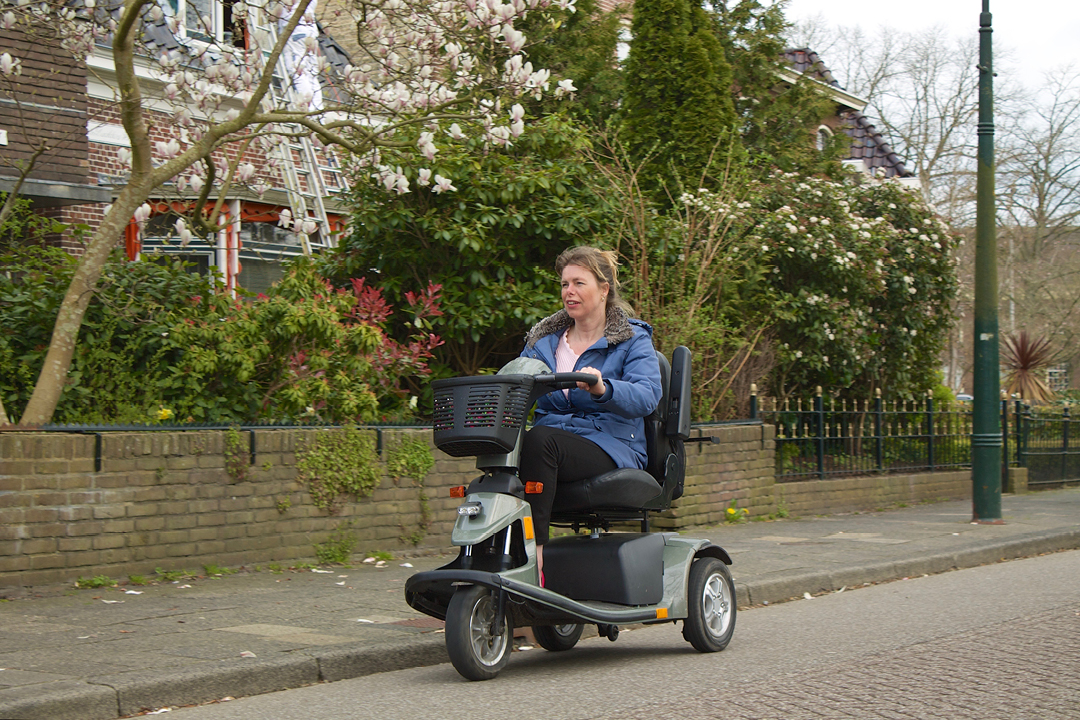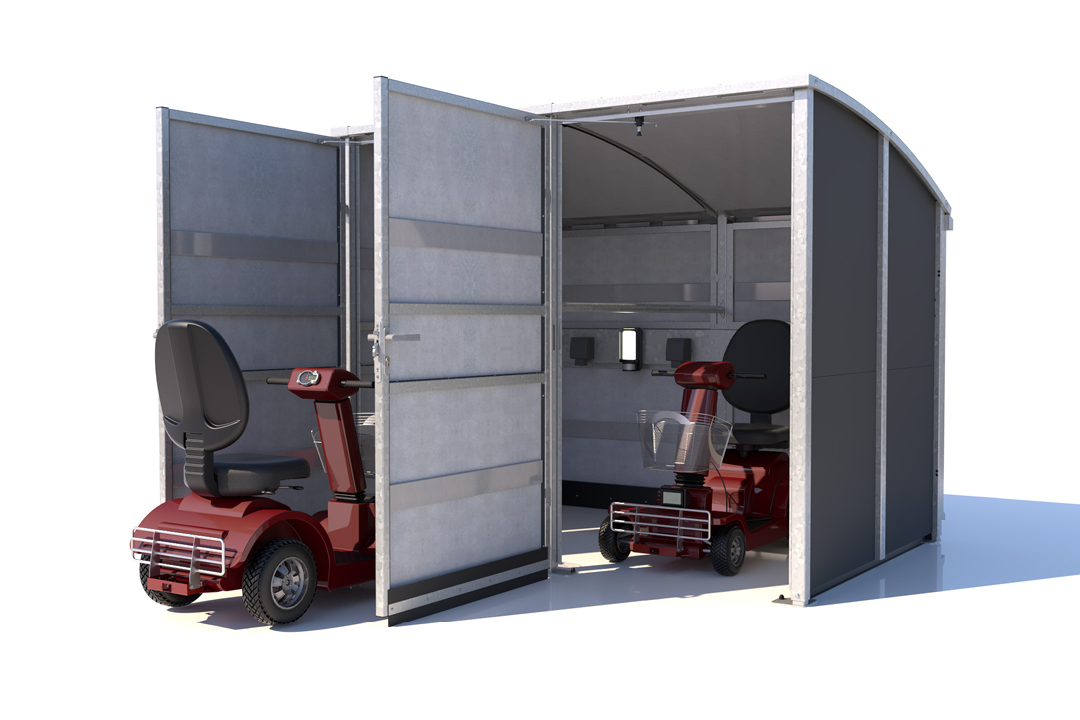
With an increasingly ageing population, the use of mobility scooters is on this rise in the UK and will only continue to grow. The housing sector must consider where these extra scooters will be stored, and consider the safety implications.
Although, the number of fires involving mobility scooters in England and Wales remains relatively low, when they do occur, they can be disastrous. With volatile and unpredictable lithium iron phosphate (LiFeP04) batteries, replacing lead acid ones, temperatures can reach 375°C within 3 minutes of ignition. This obvious threat to the lives private and social tenants is a major concern.
The sale of mobility scooters is not regulated in the UK and some of them can catch fire due to electrical faults, even if they are not plugged into a charging unit. Other common causes of fires in mobility scooters include wiring, charging equipment and arson.
Furthermore, where residents store mobility scooters in communal spaces such as hallways and in entrances, there is a concern around the blockage of escape routes in an emergency. Landlords must consider storage space options for mobility scooters to avoid hallway congestion and keep residents safe.
Best practice for mobility scooter storage
It is well-known that fires can be contained and even prevented if stored and charged in compliance with fire safety guidelines. The National Fire Chiefs Council (NFCC), has provided guidance and various recommendations for the storage of mobility scoters including:
• Escape routes should be kept clear to enable all relevant persons to evacuate quickly and safely.
• Manufacturer’s guidelines should be followed.
• Ensure that any storage area within a building is of at least 30 minutes’ fire-resisting construction.
• Removing the battery from the mobility scooter will remove the source of ignition.
• Avoid charging at night (i.e. between 8pm and 8am) – this will reduce the risk to those who are a sleep.
• Any charging in designated storage areas should be subject to portable appliance testing and subject to a risk assessment.
• Ensure consent/permission is given to tenants to store any mobility scooter.
• Ensure that tenants have insurance cover and are maintaining the equipment in line with the manufacturer’s recommendations.
• Ensure any designated areas are maintained and are fit for purpose for storage and charging.
In addition to this, mobility scooters must be included in the landlord or housing provider’s risk assessment of all common areas of properties. This will allow any associated fire risk and those affected to be identified as the basis to taking steps to minimise or remove that risk.
For new buildings, the provision of suitable spaces for storage and charging of mobility scooters should be considered at the design stage.
Councils have obligations regarding the fire safety of their premises and should work to support the right of occupants of their properties to “a quality of life” which includes the desire to use a mobility scooter.
An easy solution to scooter storage fire risk
At metroSTOR our mobility scooter storage solutions effectively remove the fire hazard associated with improper storage in residential dwellings and communal areas. The units are easy to use and can be located close to building entrances with direct access for users. Whether you choose a single locker style or a communal unit, each solution is visually attractive, simple to install, robust and most importantly – safe.

View the metroSTOR FAQs on mobility scooters

